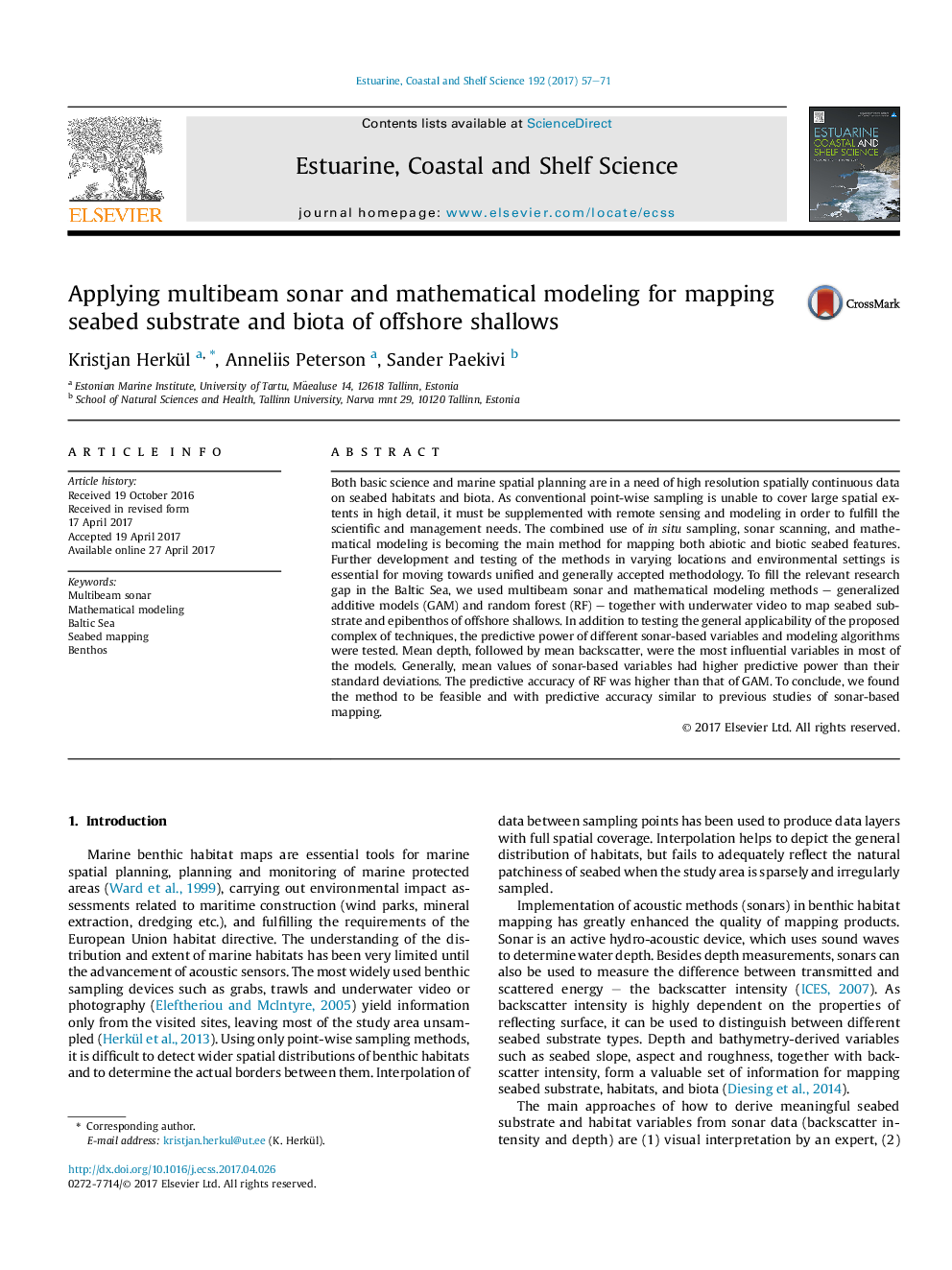| کد مقاله | کد نشریه | سال انتشار | مقاله انگلیسی | نسخه تمام متن |
|---|---|---|---|---|
| 5765163 | 1626610 | 2017 | 15 صفحه PDF | دانلود رایگان |
- Multibeam sonar, mathematical modeling and underwater video were used to map seabed substrate and invertebrates.
- Predictive power of different sonar-based variables and modeling methods were tested.
- Mean depth, followed by mean backscatter, were the most influential variables in most of the models.
- The prediction accuracy of random forest was higher than that of generalized additive models.
Both basic science and marine spatial planning are in a need of high resolution spatially continuous data on seabed habitats and biota. As conventional point-wise sampling is unable to cover large spatial extents in high detail, it must be supplemented with remote sensing and modeling in order to fulfill the scientific and management needs. The combined use of in situ sampling, sonar scanning, and mathematical modeling is becoming the main method for mapping both abiotic and biotic seabed features. Further development and testing of the methods in varying locations and environmental settings is essential for moving towards unified and generally accepted methodology. To fill the relevant research gap in the Baltic Sea, we used multibeam sonar and mathematical modeling methods - generalized additive models (GAM) and random forest (RF) - together with underwater video to map seabed substrate and epibenthos of offshore shallows. In addition to testing the general applicability of the proposed complex of techniques, the predictive power of different sonar-based variables and modeling algorithms were tested. Mean depth, followed by mean backscatter, were the most influential variables in most of the models. Generally, mean values of sonar-based variables had higher predictive power than their standard deviations. The predictive accuracy of RF was higher than that of GAM. To conclude, we found the method to be feasible and with predictive accuracy similar to previous studies of sonar-based mapping.
330
Journal: Estuarine, Coastal and Shelf Science - Volume 192, 5 June 2017, Pages 57-71
